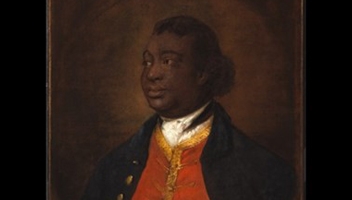Company: Alliance Assurance Company
Job role: Director
Discover Sir Moses Montefiore, a financier, philanthropist and one of the most influential Victorians of his day, whose history is woven into the fabric of RSA.
Today, we want to shine the spotlight on one of the original RSA companies, Alliance Assurance Company, founded by Sir Moses Montefiore and Nathan Rothschild in 1824.
The life of Sir Moses Montefiore demands deeper investigation. Montefiore is not only part of RSA’s history; his reach is truly global and impacts every person reading this article today.
Early years and origins
Innovation combined with family connections was key to the early success of Moses Montefiore. Born into a Jewish merchant family in Livorno, Italy in 1784, he was raised in England and began his career as a tea merchant. During this time, Montefiore was relatively relaxed about his religion, until a trip to Jerusalem in 1827 had a profound effect on him. After this spiritual awakening, he became a strictly observant Jew.
Investments and businesses
As a young man Montefiore gained acceptance to be one of a small number of Jewish businessmen allowed to trade on the London Stock Exchange. It wasn’t all plain sailing. In 1804, he fell victim to fraud, losing all his and his client’s investment. Montefiore saw potential, however, and invested heavily in gas streetlighting across Europe. In 1812, he married Judith Cohen, whose sister married the banker, Nathan Rothschild. Together, Montefiore and Rothschild went into business. In 1824, they founded Alliance Assurance Company.
Alliance Assurance was initially created to offer life and fire cover. Concurrently, Alliance Marine Assurance was established after successful lobbying of Parliament by Rothschild to break the monopoly of Lloyd's and the two chartered marine insurers. Both Rothschild and Montefiore believed that Lloyd’s discriminated against Jews. Alliance proved to be a successful undertaking and helped to earn Montefiore a vast fortune by the age of 40. This allowed him to retire early as an extremely wealthy gentleman.
Philanthropy and community support
Montefiore’s humanitarian efforts made him a popular figure in his day. He held no official ambassadorial position, but he was knighted during his term as Sheriff of London in 1837 to 1838. Wherever he travelled, he sought to improve the lives of the poor and oppressed. Close to his heart were his efforts to alleviate the suffering of Jews abroad. In 1840 he travelled to the Ottoman empire meeting with Ottoman officials, including the Sultan over a case of Blood Libel in Damascus. Beyond this he also travelled to Russia, Morocco, the Levant and Romania to secure improved positions for Jews.
He moved in many influential circles, and had audiences with emperors, sultans, pashas, and parliaments, throughout Jewish and Christian communities. He fought tirelessly to promote Ragged Schools and the reform of the Poor Law. He also campaigned for the establishment of a Jewish state in the Holy Land, contributing to the early foundations of the Zionist movement. But it was as a committed abolitionist that he was to make one of his greatest marks upon society.
The Trans-Atlantic Slave Trade
Despite the Slave Trade Act of 1807 making it illegal to engage in the slave trade within the British Empire, it did not abolish slavery itself. Slave owners had made significant profits, which discouraged them from considering the liberation of their slaves.
However, from 1823, the slavery-dependent Caribbean sugar industry went into decline, and the Reform Act of 1832 eliminated rotten boroughs that were controlled by West Indian planters, which significantly weakened the position of the slave owners.
In 1833 Parliament, after lobbying by the Anti-Slavery Society, passed the Slavery Abolition act. Within the act was provision of up to £20 million to be paid in compensation to slave owners for the loss of slaves as business assets.
£20 million was equivalent to 40% of the Treasury’s annual income. It was unpayable purely from within state funds. Montefiore and Rothschild underwrote a £15 million loan to the government in 1835 (worth over £1.6 billion) to ‘compensate’ the slave owners and facilitate the emancipation of the enslaved individuals. The remaining £5 million was funded by the Treasury.
This was not an ideal solution, but it had the desired effect. The monies were distributed under the Slave Compensation Act 1837. Slave owners scrambled to claim compensation for their losses. Once this process was underway, slavery was effectively outlawed in most of the British Empire. Exceptions for Ceylon and the East India Company would remain until 1843.
Given Montefiore’s significant achievements, his popularity during the Victorian era, and his international reputation, it is surprising that his name is relatively unknown today. While we recognise the contributions of figures like MP William Wilberforce and abolitionist Olaudah Equiano to the abolition of slavery, Montefiore’s impact often goes unnoticed.
Montefiore’s legacy
During his time, Sir Moses Montefiore was a political superstar. His reputation preceded him wherever he campaigned. He was an innovative businessman who created wealth, much of which he dedicated to funding his philanthropic efforts. He was a visionary blessed with powers of persuasion.
Montefiore has appeared on Israeli banknotes, blue plaques, street names and medical centres. He is also written into many charitable works that bear his name.
Queen Victoria once asked Montefiore, "Sir Moses, what is the extent of your wealth? How much do you own?" After a few days Montefiore replied and presented the figure. Queen Victoria was upset, commenting, “This is offensive: Everyone knows that you have far greater wealth."
Montefiore responded, “Your majesty, my only true wealth is money that I have given to charity. Anything else I possess is merely temporary and may someday be lost or confiscated.”
Sir Moses Haim Montefiore, 1st Baronet, may have disappeared from the history books of noteworthy Victorians, but we celebrate him as one of the greatest of all RSA people; someone whose legacy we can all be proud of.



